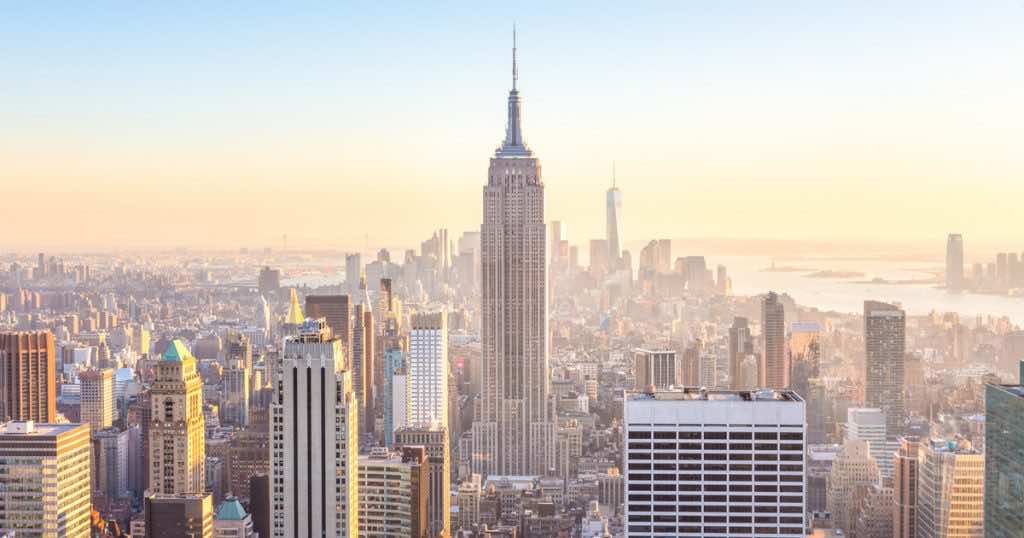The Empire State Building is a 102-story, 1,454 feet (443.2 m) tall Art Deco skyscraper in Midtown Manhattan in New York City, United States. It was designed by Shreve, Lamb & Harmon and built from 1930 to 1931. From its opening till 1970, it was the tallest building in the world and today remains one of the most iconic representations of American architecture. As of 2020, the building is the seventh-tallest building in New York City, the ninth-tallest completed skyscraper in the United States, the 49th-tallest in the world, and the sixth-tallest freestanding structure in the Americas.
The Empire State Building is generally thought of as an American cultural icon. It is designed in the distinctive Art Deco style and has been named as one of the Seven Wonders of the Modern World by the American Society of Civil Engineers. The building and its street floor interior are designated landmarks of the New York City Landmarks Preservation Commission, and confirmed by the New York City Board of Estimate. It was designated as a National Historic Landmark in 1986. The Empire State Building was designed by William F. Lamb from the architectural firm Shreve, Lamb and Harmon, which produced the building drawings in just two weeks, using its earlier designs for the Reynolds Building in Winston-Salem, North Carolina, and the Carew Tower in Cincinnati, Ohio (designed by the architectural firm W. W. Ahlschlager & Associates) as a basis. Interestingly, the building was designed from the top down. The Empire State Building features an art deco design, typical of pre–World War II architecture in New York, seen in the Chrysler Building for example. The modernistic stainless steel canopies of the entrances on 33rd and 34th Streets lead to two story-high corridors around the elevator core, crossed by stainless steel and glass-enclosed bridges at the second-floor level. The elevator core contains 67 elevators.
The design was said to have been based on a pencil, with 85 storeys of commercial and office space. The 86th floor houses an indoor and outdoor observation deck, and the 16 storeys above form the art deco tower, topped by an observatory on the 102nd floor. It was the first building in the world to exceed 100 floors. The building has a total of 73 elevators located in a central core. The spire was added to ensure its total height was greater than the Chrysler Building and this was later converted into a broadcast tower for TV and radio. It was built using a hot riveted steel frame. This means the joints are stronger than any weld or bolt, as the hot rivets apply pressure between the two surfaces.
The Empire State Building has remained a cultural icon ever since it appeared in the climax of the film King Kong in 1933 in which the eponymous ape scales the building whilst being attacked by fighter planes.

